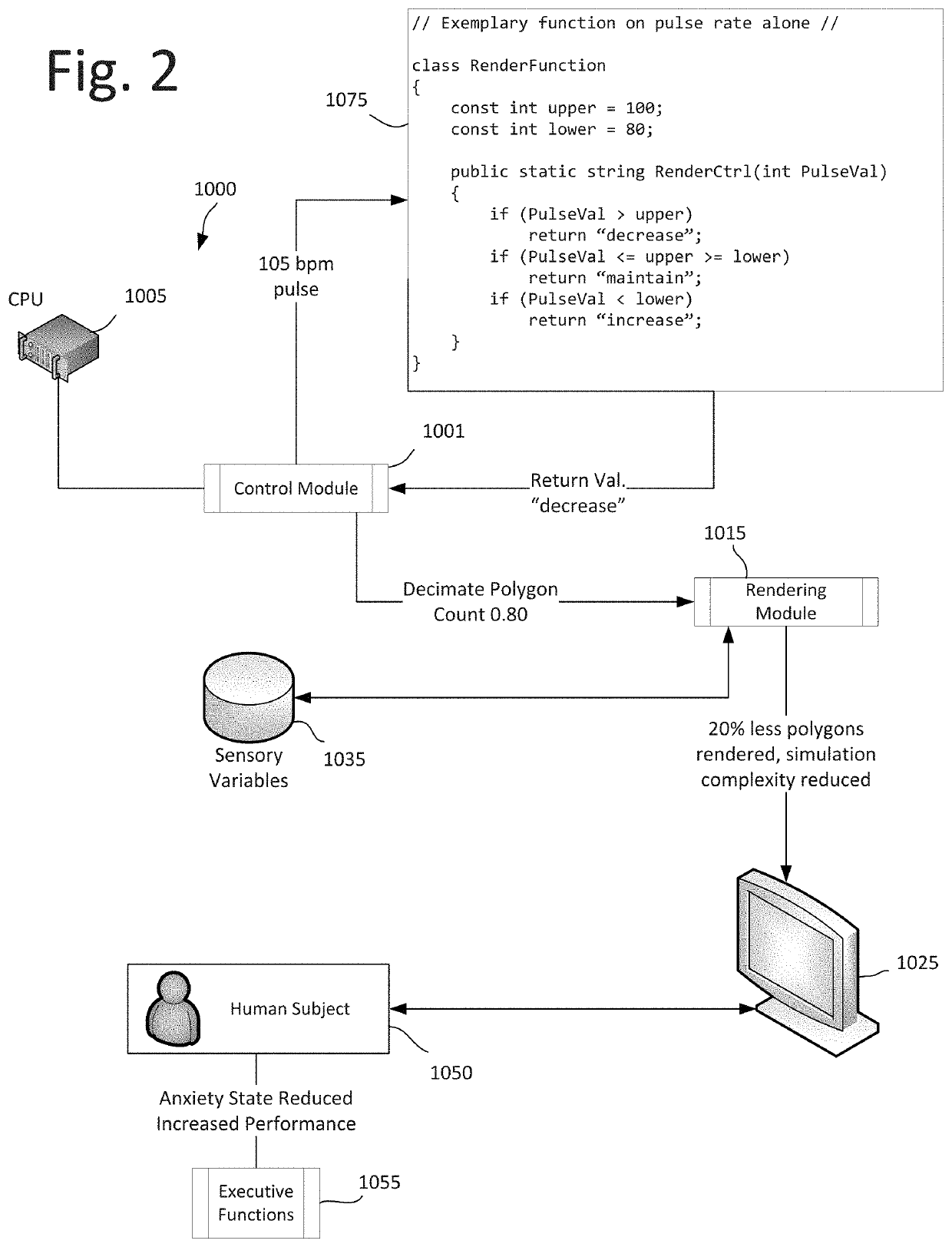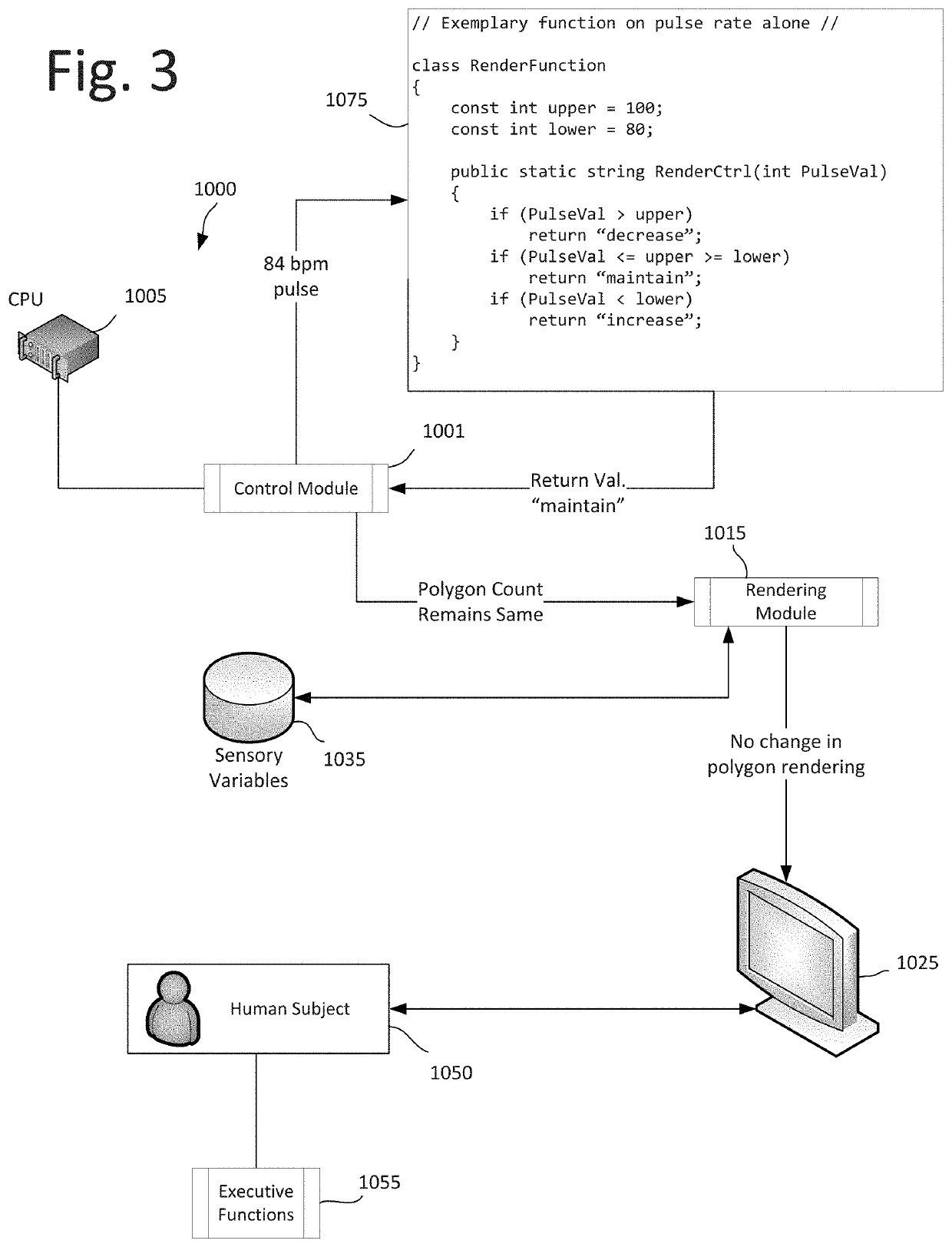Sensor-based complexity modulation for therapeutic computer-simulations
a computer simulation and complexity technology, applied in mental therapies, instruments, teaching apparatus, etc., can solve problems such as subject fatigue, and achieve the effects of decreasing sensory complexity, increasing sensor-detected anxiety level, and decreasing sensor-detected anxiety level
- Summary
- Abstract
- Description
- Claims
- Application Information
AI Technical Summary
Benefits of technology
Problems solved by technology
Method used
Image
Examples
Embodiment Construction
[0059]Turning to FIG. 1, the apparatus is denoted a reference number 1000 as a whole. Control module 1001 includes computer processing unit 1005 that executes functions, procedures and routines embodied on non-transitory computer media. Control module 1001 is communicatively coupled to simulation datastore 1010 which is a repository for computer-generated features in a computer-simulated environment. The computer-generated features may include background structures, landscapes, and static views. The computer-generated features may also include static and moving objects to which the human subject 1050, immersed in the virtual computer-simulated environment engages with. Within the environment, the human subject 1050 is tasked to perform an executive function. This executive function requires a sufficient level of cognitive function whereby an increase in the anxiety state of the human subject 1050 would hinder the successful completion of the executive function.
[0060]It should be not...
PUM
 Login to View More
Login to View More Abstract
Description
Claims
Application Information
 Login to View More
Login to View More - R&D
- Intellectual Property
- Life Sciences
- Materials
- Tech Scout
- Unparalleled Data Quality
- Higher Quality Content
- 60% Fewer Hallucinations
Browse by: Latest US Patents, China's latest patents, Technical Efficacy Thesaurus, Application Domain, Technology Topic, Popular Technical Reports.
© 2025 PatSnap. All rights reserved.Legal|Privacy policy|Modern Slavery Act Transparency Statement|Sitemap|About US| Contact US: help@patsnap.com



